Advanced Search: Build a Custom Dashboard
In the fields below, search for indicators by location, topics, population, classification, subgroup, or comparison. No fields are required, but we suggest selecting a location or two to start. In the additional search options section, select options to group and order search results. To learn more about how to customize a dashboard, see our help center.
Visit the Indicator List Page to see the full list of indicators and locations available on the site.
Search Results:
Indicator Gauge Icon Legend
Legend Colors
Red is bad, green is good, blue is not statistically different/neutral.
Compared to Distribution
 the value is in the best half of communities.
the value is in the best half of communities.
 the value is in the 2nd worst quarter of communities.
the value is in the 2nd worst quarter of communities.
 the value is in the worst quarter of communities.
the value is in the worst quarter of communities.
Compared to Target
 meets target;
meets target;  does not meet target.
does not meet target.
Compared to a Single Value
 lower than the comparison value;
lower than the comparison value;
 higher than the comparison value;
higher than the comparison value;
 not statistically different from comparison value.
not statistically different from comparison value.
Trend

 non-significant change over time;
non-significant change over time; 
 significant change over time;
significant change over time;  no change over time.
no change over time.
Compared to Prior Value
 higher than the previous measurement period;
higher than the previous measurement period;
 lower than the previous measurement period;
lower than the previous measurement period;
 no statistically different change from previous measurement period.
no statistically different change from previous measurement period.
Education / Educational Attainment
Education / Educational Attainment
People 25+ with a High School Diploma or Higher
People 25+ with a High School Diploma or Higher Census Tract: 11001007603
People 25+ with a High School Diploma or Higher Census Tract: 11001007603
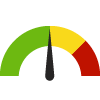

People 25+ with a High School Diploma or Higher Census Tract: 11001007604
People 25+ with a High School Diploma or Higher Census Tract: 11001007604


People 25+ with a High School Diploma or Higher Census Tract: 11001007605
People 25+ with a High School Diploma or Higher Census Tract: 11001007605


People 25+ with a High School Diploma or Higher Census Tract: 11001007703
People 25+ with a High School Diploma or Higher Census Tract: 11001007703


People 25+ with a High School Diploma or Higher Census Tract: 11001007707
People 25+ with a High School Diploma or Higher Census Tract: 11001007707


People 25+ with a High School Diploma or Higher Census Tract: 11001007708
People 25+ with a High School Diploma or Higher Census Tract: 11001007708
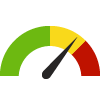

People 25+ with a High School Diploma or Higher Census Tract: 11001007709
People 25+ with a High School Diploma or Higher Census Tract: 11001007709
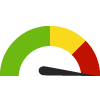

People 25+ with a High School Diploma or Higher Census Tract: 11001007803
People 25+ with a High School Diploma or Higher Census Tract: 11001007803


People 25+ with a High School Diploma or Higher Census Tract: 11001007804
People 25+ with a High School Diploma or Higher Census Tract: 11001007804


People 25+ with a High School Diploma or Higher Census Tract: 11001007806
People 25+ with a High School Diploma or Higher Census Tract: 11001007806


People 25+ with a High School Diploma or Higher Census Tract: 11001007807
People 25+ with a High School Diploma or Higher Census Tract: 11001007807


People 25+ with a High School Diploma or Higher Census Tract: 11001007808
People 25+ with a High School Diploma or Higher Census Tract: 11001007808
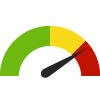

People 25+ with a High School Diploma or Higher Census Tract: 11001007809
People 25+ with a High School Diploma or Higher Census Tract: 11001007809


People 25+ with a High School Diploma or Higher Census Tract: 11001007901
People 25+ with a High School Diploma or Higher Census Tract: 11001007901
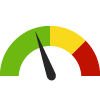

People 25+ with a High School Diploma or Higher Census Tract: 11001007903
People 25+ with a High School Diploma or Higher Census Tract: 11001007903


People 25+ with a High School Diploma or Higher Census Tract: 11001008001
People 25+ with a High School Diploma or Higher Census Tract: 11001008001
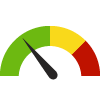

People 25+ with a High School Diploma or Higher Census Tract: 11001008002
People 25+ with a High School Diploma or Higher Census Tract: 11001008002
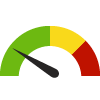

People 25+ with a High School Diploma or Higher Census Tract: 11001008100
People 25+ with a High School Diploma or Higher Census Tract: 11001008100


People 25+ with a High School Diploma or Higher Census Tract: 11001008200
People 25+ with a High School Diploma or Higher Census Tract: 11001008200


People 25+ with a High School Diploma or Higher Census Tract: 11001008301
People 25+ with a High School Diploma or Higher Census Tract: 11001008301


People 25+ with a High School Diploma or Higher Census Tract: 11001008302
People 25+ with a High School Diploma or Higher Census Tract: 11001008302


People 25+ with a High School Diploma or Higher Census Tract: 11001008402
People 25+ with a High School Diploma or Higher Census Tract: 11001008402


People 25+ with a High School Diploma or Higher Census Tract: 11001008410
People 25+ with a High School Diploma or Higher Census Tract: 11001008410


People 25+ with a High School Diploma or Higher Census Tract: 11001008701
People 25+ with a High School Diploma or Higher Census Tract: 11001008701


People 25+ with a High School Diploma or Higher Census Tract: 11001008702
People 25+ with a High School Diploma or Higher Census Tract: 11001008702


People 25+ with a High School Diploma or Higher Census Tract: 11001008802
People 25+ with a High School Diploma or Higher Census Tract: 11001008802


People 25+ with a High School Diploma or Higher Census Tract: 11001008803
People 25+ with a High School Diploma or Higher Census Tract: 11001008803


People 25+ with a High School Diploma or Higher Census Tract: 11001008804
People 25+ with a High School Diploma or Higher Census Tract: 11001008804


People 25+ with a High School Diploma or Higher Census Tract: 11001008903
People 25+ with a High School Diploma or Higher Census Tract: 11001008903


People 25+ with a High School Diploma or Higher Census Tract: 11001008904
People 25+ with a High School Diploma or Higher Census Tract: 11001008904


People 25+ with a High School Diploma or Higher Census Tract: 11001009000
People 25+ with a High School Diploma or Higher Census Tract: 11001009000


People 25+ with a High School Diploma or Higher Census Tract: 11001009102
People 25+ with a High School Diploma or Higher Census Tract: 11001009102


People 25+ with a High School Diploma or Higher Census Tract: 11001009201
People 25+ with a High School Diploma or Higher Census Tract: 11001009201


People 25+ with a High School Diploma or Higher Census Tract: 11001009203
People 25+ with a High School Diploma or Higher Census Tract: 11001009203


People 25+ with a High School Diploma or Higher Census Tract: 11001009204
People 25+ with a High School Diploma or Higher Census Tract: 11001009204


People 25+ with a High School Diploma or Higher Census Tract: 11001009301
People 25+ with a High School Diploma or Higher Census Tract: 11001009301


People 25+ with a High School Diploma or Higher Census Tract: 11001009302
People 25+ with a High School Diploma or Higher Census Tract: 11001009302


People 25+ with a High School Diploma or Higher Census Tract: 11001009400
People 25+ with a High School Diploma or Higher Census Tract: 11001009400


People 25+ with a High School Diploma or Higher Census Tract: 11001009501
People 25+ with a High School Diploma or Higher Census Tract: 11001009501


People 25+ with a High School Diploma or Higher Census Tract: 11001009503
People 25+ with a High School Diploma or Higher Census Tract: 11001009503


People 25+ with a High School Diploma or Higher Census Tract: 11001009504
People 25+ with a High School Diploma or Higher Census Tract: 11001009504


People 25+ with a High School Diploma or Higher Census Tract: 11001009505
People 25+ with a High School Diploma or Higher Census Tract: 11001009505


People 25+ with a High School Diploma or Higher Census Tract: 11001009507
People 25+ with a High School Diploma or Higher Census Tract: 11001009507


People 25+ with a High School Diploma or Higher Census Tract: 11001009508
People 25+ with a High School Diploma or Higher Census Tract: 11001009508


People 25+ with a High School Diploma or Higher Census Tract: 11001009509
People 25+ with a High School Diploma or Higher Census Tract: 11001009509


People 25+ with a High School Diploma or Higher Census Tract: 11001009601
People 25+ with a High School Diploma or Higher Census Tract: 11001009601


People 25+ with a High School Diploma or Higher Census Tract: 11001009602
People 25+ with a High School Diploma or Higher Census Tract: 11001009602


People 25+ with a High School Diploma or Higher Census Tract: 11001009603
People 25+ with a High School Diploma or Higher Census Tract: 11001009603


People 25+ with a High School Diploma or Higher Census Tract: 11001009604
People 25+ with a High School Diploma or Higher Census Tract: 11001009604


People 25+ with a High School Diploma or Higher Census Tract: 11001009700
People 25+ with a High School Diploma or Higher Census Tract: 11001009700


People 25+ with a High School Diploma or Higher Census Tract: 11001009801
People 25+ with a High School Diploma or Higher Census Tract: 11001009801


People 25+ with a High School Diploma or Higher Census Tract: 11001009802
People 25+ with a High School Diploma or Higher Census Tract: 11001009802


People 25+ with a High School Diploma or Higher Census Tract: 11001009803
People 25+ with a High School Diploma or Higher Census Tract: 11001009803


People 25+ with a High School Diploma or Higher Census Tract: 11001009804
People 25+ with a High School Diploma or Higher Census Tract: 11001009804


People 25+ with a High School Diploma or Higher Census Tract: 11001009807
People 25+ with a High School Diploma or Higher Census Tract: 11001009807


People 25+ with a High School Diploma or Higher Census Tract: 11001009810
People 25+ with a High School Diploma or Higher Census Tract: 11001009810


People 25+ with a High School Diploma or Higher Census Tract: 11001009811
People 25+ with a High School Diploma or Higher Census Tract: 11001009811


People 25+ with a High School Diploma or Higher Census Tract: 11001009901
People 25+ with a High School Diploma or Higher Census Tract: 11001009901


People 25+ with a High School Diploma or Higher Census Tract: 11001009902
People 25+ with a High School Diploma or Higher Census Tract: 11001009902


People 25+ with a High School Diploma or Higher Census Tract: 11001009903
People 25+ with a High School Diploma or Higher Census Tract: 11001009903


People 25+ with a High School Diploma or Higher Census Tract: 11001009904
People 25+ with a High School Diploma or Higher Census Tract: 11001009904


People 25+ with a High School Diploma or Higher Census Tract: 11001009905
People 25+ with a High School Diploma or Higher Census Tract: 11001009905


People 25+ with a High School Diploma or Higher Census Tract: 11001009906
People 25+ with a High School Diploma or Higher Census Tract: 11001009906


People 25+ with a High School Diploma or Higher Census Tract: 11001009907
People 25+ with a High School Diploma or Higher Census Tract: 11001009907


People 25+ with a High School Diploma or Higher Census Tract: 11001010100
People 25+ with a High School Diploma or Higher Census Tract: 11001010100


People 25+ with a High School Diploma or Higher Census Tract: 11001010200
People 25+ with a High School Diploma or Higher Census Tract: 11001010200


People 25+ with a High School Diploma or Higher Census Tract: 11001010300
People 25+ with a High School Diploma or Higher Census Tract: 11001010300


People 25+ with a High School Diploma or Higher Census Tract: 11001010400
People 25+ with a High School Diploma or Higher Census Tract: 11001010400


People 25+ with a High School Diploma or Higher Census Tract: 11001010500
People 25+ with a High School Diploma or Higher Census Tract: 11001010500


People 25+ with a High School Diploma or Higher Census Tract: 11001010600
People 25+ with a High School Diploma or Higher Census Tract: 11001010600


People 25+ with a High School Diploma or Higher Census Tract: 11001010700
People 25+ with a High School Diploma or Higher Census Tract: 11001010700


People 25+ with a High School Diploma or Higher Census Tract: 11001010800
People 25+ with a High School Diploma or Higher Census Tract: 11001010800


People 25+ with a High School Diploma or Higher Census Tract: 11001010900
People 25+ with a High School Diploma or Higher Census Tract: 11001010900


People 25+ with a High School Diploma or Higher Census Tract: 11001011000
People 25+ with a High School Diploma or Higher Census Tract: 11001011000


People 25+ with a High School Diploma or Higher Census Tract: 11001011100
People 25+ with a High School Diploma or Higher Census Tract: 11001011100


Education / School Environment
Student-to-Teacher Ratio City: District of Columbia
Student-to-Teacher Ratio City: District of Columbia





Education / Student Performance K-12
4th Grade Students Proficient in Math City: District of Columbia
4th Grade Students Proficient in Math City: District of Columbia


4th Grade Students Proficient in Reading City: District of Columbia
4th Grade Students Proficient in Reading City: District of Columbia


8th Grade Students Proficient in Math City: District of Columbia
8th Grade Students Proficient in Math City: District of Columbia


8th Grade Students Proficient in Reading City: District of Columbia
8th Grade Students Proficient in Reading City: District of Columbia


Environmental Health / Air
Annual Ozone Air Quality City: District of Columbia
Annual Ozone Air Quality City: District of Columbia



Annual Particle Pollution City: District of Columbia
Annual Particle Pollution City: District of Columbia



Recognized Carcinogens Released into Air City: District of Columbia
Recognized Carcinogens Released into Air City: District of Columbia


Recognized Carcinogens Released into Air Zip Code: 20002
Recognized Carcinogens Released into Air Zip Code: 20002


Recognized Carcinogens Released into Air Zip Code: 20003
Recognized Carcinogens Released into Air Zip Code: 20003


Recognized Carcinogens Released into Air Zip Code: 20011
Recognized Carcinogens Released into Air Zip Code: 20011


Recognized Carcinogens Released into Air Zip Code: 20018
Recognized Carcinogens Released into Air Zip Code: 20018


Recognized Carcinogens Released into Air Zip Code: 20019
Recognized Carcinogens Released into Air Zip Code: 20019

Recognized Carcinogens Released into Air Zip Code: 20032
Recognized Carcinogens Released into Air Zip Code: 20032


Recognized Carcinogens Released into Air Zip Code: 20228
Recognized Carcinogens Released into Air Zip Code: 20228


Environmental Health / Built Environment
Access to Exercise Opportunities City: District of Columbia
Access to Exercise Opportunities City: District of Columbia
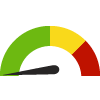



Access to Parks City: District of Columbia
Access to Parks City: District of Columbia

Food Environment Index City: District of Columbia
Food Environment Index City: District of Columbia





Proximity to Highways City: District of Columbia
Proximity to Highways City: District of Columbia

Environmental Health / Toxins & Contaminants
PBT Released City: District of Columbia
PBT Released City: District of Columbia


PBT Released Zip Code: 20002
PBT Released Zip Code: 20002


PBT Released Zip Code: 20003
PBT Released Zip Code: 20003


PBT Released Zip Code: 20011
PBT Released Zip Code: 20011


PBT Released Zip Code: 20018
PBT Released Zip Code: 20018


PBT Released Zip Code: 20032
PBT Released Zip Code: 20032


PBT Released Zip Code: 20228
PBT Released Zip Code: 20228


PBT Released Zip Code: 20460
PBT Released Zip Code: 20460


Environmental Health / Weather & Climate
Daily Dose of UV Irradiance City: District of Columbia
Daily Dose of UV Irradiance City: District of Columbia


Number of Extreme Heat Days City: District of Columbia
Number of Extreme Heat Days City: District of Columbia


Number of Extreme Heat Events City: District of Columbia
Number of Extreme Heat Events City: District of Columbia


Weeks of Moderate Drought or Worse City: District of Columbia
Weeks of Moderate Drought or Worse City: District of Columbia


